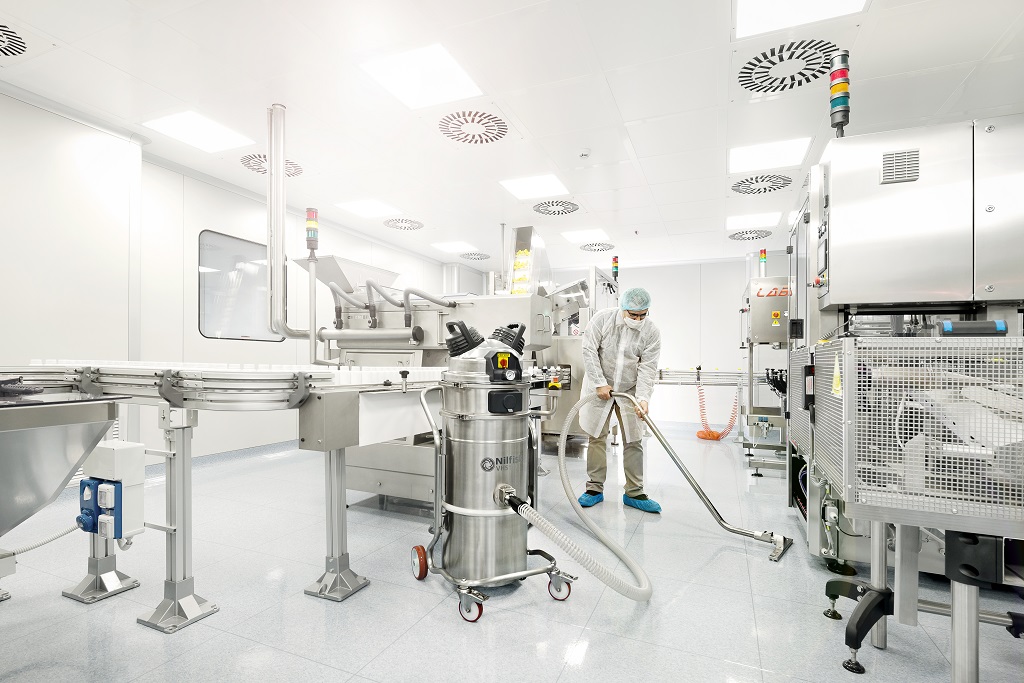The global cleanroom technology market size is expected to reach USD 5.0 billion by 2028 and is expected to expand at a rate of 5.4% over the forecast period. Key factors driving market growth is growing compliance with stringent regulatory standards for new product approvals and increased awareness about contamination-free products.[i]
Despite the Covid-19 pandemic disrupting the supply chain of consumables required in cleanrooms such as gloves, wipes and other cleaning products as a supplier of essential products the pharmaceutical industry has been able to withstand the economic downturn over the past decade.
“South Africa is a major manufacturing and export hub for the pharmaceutical industry and is subject to not only local legislative oversight but also to those of the countries the medicines or medical equipment is being exported to,” says Emma Corder, managing director of cleaning products manufacturer Industroclean.
While almost 70% of the pharmaceutical products that are used are locally produced, various active pharmaceutical ingredients and finished products are imported. The sector is highly regulated, and the development, production, marketing, and sale of pharmaceuticals are strictly controlled.[ii]
Demand for sanitisers and hygiene products in response to the coronavirus has seen a number of non-specialist manufacturers and suppliers enter the market. “With the level of scrutiny, hygiene and safety in this sector, close collaboration between cleaning solutions providers and pharmaceutical companies is crucial,” Corder continues.
An integrated approach can ensure that cleaning machines provide the right level of performance otherwise, they will not perform at optimum levels, and this can impact on the final product. As with most sectors, technology has made it easier to execute and track performance of cleaning machines.
All tools, containers and fixtures used in the cleaning process should be cleaned to the same degree as the cleanroom surfaces as all these items are a source of contamination. Some of the general regulations recommended as a minimum for the successful operation of a cleanroom and which all professional cleaning personnel should be aware of and follow at all times are;
- No tool should be allowed to rest on the surface of a bench or table. It should be place on a cleanroom wiper.
- Only cleanroom approved wipers are allowed to be used. The wipers must be approved for the Class of cleanroom being cleaned.
- All equipment, materials and containers introduced into a sterile facility must be subjected to stringent sterilisation prior to entrance.
In South Africa, the manufacturing of pharmaceuticals is guided by Good Manufacturing Practices (GMP) and overseen by the Department of Health.
The World Health Organization (WHO) has established GMP guidelines in detail from which many countries, including South Africa, have formulated their own GMP.
Two of the main rules of GMP in the production of pharmaceuticals which pertain to cleanliness and hygiene states:
- Facilities must be cleaned, and high standards of hygiene and quality must be maintained from procurement to product.
- Cross-contamination must be prevented by temperature and humidity-controlled environments and by restricting entry to authorized staff with proper work gear.
Says Corder: “What is important to understand is that medicines produced in South Africa and exported to the US, for example, are also under scrutiny of the US’s Food and Drug Administration (FDA).”
The FDA has to make sure the medicines they import from elsewhere conforms to their rules and regulations. “The pharmaceutical company has to provide documents that the cleaning of the equipment and the room where it is manufactured has been through a process of validation,” says Corder.
Contamination – dust or otherwise – in the spaces where the pharmaceuticals are produced is high on the list of challenges faced by the industry. The manufacturing process of any type of medicinal product is often complex if one considers the number of phases involved and the different substances being handled: from active ingredients handling to tabletting, right through to the finished packaged product.
The substances used can sometimes pose a risk to the health of the operator and are often characterised by a high intrinsic value. Guaranteeing the highest levels of hygiene and safety is vital in order to avoid any kind of contamination, exposure or direct contact with such products as well as ensure the highest productivity.
Vacuuming is an integral part of the medicine production process and Industroclean’s range of industrial vacuum cleaners are specifically designed to be used to clean inside and outside process machines. It helps to avoid cross contamination, maintains the condition of the process machine – thereby extending its life span – collects and contains all kinds of waste and dramatically reduces cleaning time.
Corder concludes that for the South African pharmaceutical industry to thrive it needs to continuously look at ways to enhancing its processes and protocols which will include an environment free of contaminants.


